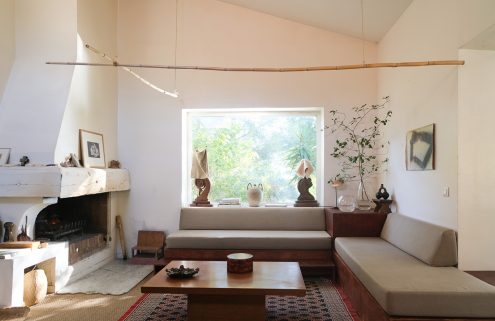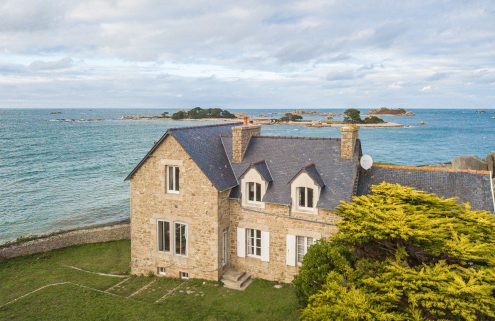
Photography: Patrice Besse
This heritage-listed art deco church is seeking a second life two hours outside of Paris, in France’s Picardy region.
Architect Narcisse Laurent designed the Saint-Quentin monument in 1937, building it on a plot of land at the heart of trench warfare in World War I – a ‘church to heal the wounds’ of conflict. Laurent adopted a Roman-Byzantine art deco style for the colossal structure, laid out in a polylobed plan in a Greek cross, with spaces set across two levels – the church proper and a lower level, housing offices, vestry, crypt and other more mundane functions.
The church is built of reinforced concrete, though this is hidden by yellow brickwork, and is crowned by a vast dome, supported by eight pillars and inset with 16 stained-glass windows that form an unbroken band of stylised crosses, a copper crown and lantern. Inside, the transept crosses the nave, with the dome soaring 18 metres above the floor – an awe-inspiring space which commands attention.

Photography: Patrice Besse

Photography: Patrice Besse

Photography: Patrice Besse
The 950 sq m interiors are surprisingly plain: white-washed walls have no mouldings, statues or decorative flourishes. Instead, decorative drama comes from the building’s proportions and epic stained glass windows by master glass artist F Schutze, depicting Joan of Arc, the Virgin Marty, St Louis, St Quentin and parish patron St Eligius, illustrated in kaleidoscopic colour.
Sainte-Thérèse Church is for sale via Patrice Besse for €250,000. The French property was recently listed as a historical monument and has been on and off the market since around 2011; it is looking for a buyer with deep enough pockets to renovate it. (Projections estimate at least €350,000 for renovations to the concrete shell, water damage, plus modernisation).
But could 2024 finally be the year it finds its new role?


























